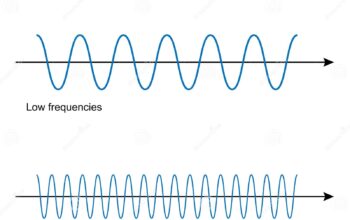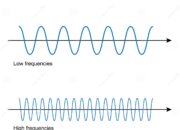Acoustic lenses, designed to manipulate sound waves for various applications ranging from medical imaging to structural engineering, have recently encountered notable challenges. These devices, akin to their optical counterparts that bend light, promise to revolutionize our understanding and utilization of acoustic phenomena. Yet, the term “bad vibrations” now resonates through scholarly discourse, suggesting that not all is harmonious in the realm of sound manipulation. This article delves into the current setbacks faced by acoustic lenses, examining the inherent complexities of sound wave behavior, the technological impediments, and potential pathways for advancement.
The allure of acoustic lenses lies in their ability to focus, steer, and control sound waves, much like how optics govern visible light. Sound, as a mechanical wave, requires a medium for propagation, and its manipulation involves the intricacies of phase, frequency, and amplitude. When designed effectively, these lenses can achieve remarkable feats, such as enhancing ultrasound imaging or providing advanced sensing technologies. However, the desired effects are often overshadowed by unexpected phenomena that disrupt the intended acoustic pathways.
One of the significant hurdles encountered in the development of acoustic lenses is the phenomenon of aberration. While optical lenses suffer from chromatic aberration—where different wavelengths of light focus at different points—acoustic lenses experience a distinct form of distortion. This aberration can manifest as unexpected focal points, degraded resolution, and even the escalation of noise levels, akin to a discordant symphony where each instrument plays out of tune. The challenge is to design materials and geometries that can mitigate these distortions while maintaining the lens’s functionality.
Moreover, material properties play a critical role in the efficiency and effectiveness of acoustic lenses. The choice of medium, including density and elasticity, influences how sound waves interact with the lens. Traditional materials such as plastics and metals exhibit limitations in their acoustic impedance, which can lead to significant energy loss and reflection at boundaries. Researchers are now exploring novel composites and metamaterials—engineered to exhibit tailored acoustic properties—aiming to overcome these barriers. However, the creation of such advanced materials often requires intricate fabrication techniques and deeper insights into the physical laws governing wave interactions.
Furthermore, the operational environment in which acoustic lenses function cannot be overlooked. Variations in temperature, pressure, and humidity can drastically alter sound propagation characteristics. For instance, ultrasound applications in medical settings demand precise calibration of acoustic lenses to ensure accurate imaging. Any fluctuations in the acoustic properties of the medium can lead to misleading results during examinations, highlighting the need for robust lens designs that can withstand environmental variability. This points to an intricate balance required in acoustic lens design: a compromise between theoretical idealism and practical robustness.
In light of these challenges, researchers have proposed various strategies to ameliorate the performance of acoustic lenses. Adaptive optics, typically used in astronomy to counteract atmospheric disturbances, can potentially be repurposed for acoustic lens applications. By employing sensors that detect aberrations in real-time and actuators that adjust the lens parameters accordingly, it is conceivable to enhance the fidelity of sound manipulation. This approach not only presents an innovative solution but also draws upon interdisciplinary methodologies, weaving together optics, acoustics, and advanced materials science into a cohesive framework.
Meanwhile, the exploration of digital signal processing techniques has emerged as another pivotal avenue for rectifying acoustic lens shortcomings. Algorithms designed to analyze and filter signal distortions offer a complementary approach to physical alterations in lens design. With the rise of machine learning, data-driven techniques can optimize the performance of acoustic lenses by predicting aberrations and suggesting corrective actions. This synergy between hardware and software not only enhances the acoustic lenses but also marks a significant leap towards intelligent sound manipulation.
Despite the ongoing challenges faced by acoustic lenses, the field remains ripe for innovation. The confluence of interdisciplinary research, technological advancements, and a growing understanding of acoustic wave mechanics offers unprecedented opportunities to reinvigorate this area of study. As researchers delve deeper into the realms of complex materials and sophisticated design methodologies, the potential of acoustic lenses becomes increasingly tantalizing.
In conclusion, while the phrase “bad vibrations” suggests a downturn in the functionality of acoustic lenses, it also serves as a catalyst for innovation and exploration. The setbacks faced in this field may appear daunting, yet they are not insurmountable. Rather, they illuminate the path for future advancements, beckoning a new generation of physicists and engineers to reimagine the possibilities of sound. Acoustic lenses hold the promise of transforming industries, from healthcare to manufacturing, and as the challenges are met, their impact will undoubtedly resonate across various domains. The pursuit of refinement in this field continues to be a testament to human ingenuity, underscoring the potential for sound to become a tool of precision rather than simply a medium of expression.












